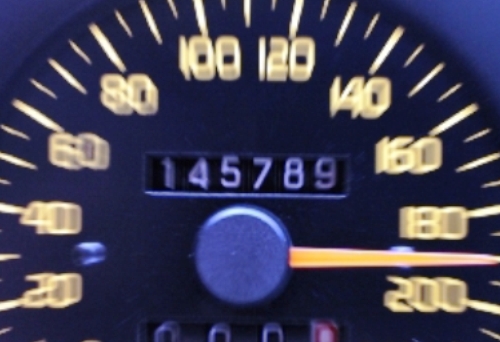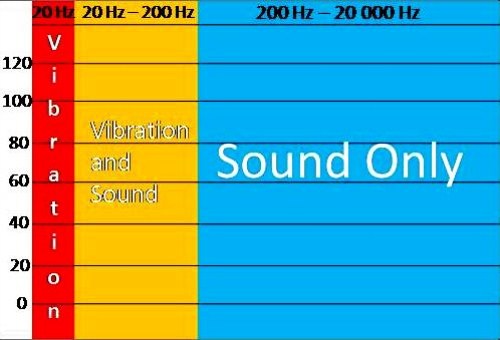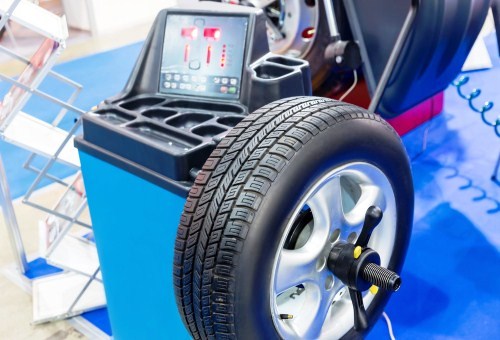
It has happened to all of us; a customer presents a vehicle that exhibits an odd vibration that we just know is going to take us hours to find and fix, and when we do, the customer is unhappy about a bill for several hours’ labour for something that should have taken no longer than it takes to say “I’ve found the problem”. Fortunately, the above scenario is the exception, and most odd vibrations and annoying sounds are relatively easy to fix, but in some cases, we need to bring out the big guns in the form of oscilloscopes to find and resolve stubborn NVH issues. In this article, we will take a closer look at vibrations, and how you can use an oscilloscope to find and resolve the root causes of many NVH issues, starting with the -
As a rule, we can classify automotive vibrations as vibrations that are related to the vehicle’s road speed, vibrations that are related to the engine speed, and vibrations that are related to rotating components such as clutch/flywheel assemblies, torque converters, drive shafts, brake drums/rotors, etc.
More to the point though, all vibrations have three components, each of which can influence how and where the vibration manifests. In their simplest form, these components are-
The source
In most cases, the source of a vibration is a rotating component that either is out of balance, or has a mass distribution that causes a part of the component to orbit the components’ plane of rotation / centre of rotation. A case in point would be a bent drive shaft; in such a case, the point where the deflection from its longitudinal axis is the greatest would be the point where the mass displacement is big enough to cause the deflection in the shaft to orbit the plane of rotation.
The transfer path
The transfer path of a vibration can be described as anything that is in any way connected to both the source of the vibration and the component(s) that either vibrates visibly, or emits a sound that is caused by the vibration.
The responding component(s)
The responding component(s) are those components that vibrate visibly, and/or emit vibration- induced sounds. These are typically seats, steering wheels, mirrors, exhaust components, instrument clusters/panels, sun visors, etc., that vibrate in response to vibrations that originate elsewhere in the vehicle’s structure. However, if we want to use an oscilloscope to diagnose NVH issues, we need quantifiable data, and the best way to understand how to obtain such data is to understand-

The image above represents an approximation of the frequency and amplitude ranges in which humans typically detect vibrations by feel, or sound, or as a combination of both. In this image, the vertical axis represents the amplitude of vibration cycles, while the horizontal axis represents the frequency ranges of vibration cycles. Note that the red band in this image represents the frequency range in which vibrations can typically only be felt by most people, since most humans cannot hear sounds at frequencies below about 20 Hz.
Cycle
A cycle is one complete disturbance. For instance, a cycle would start when the rotation of an unbalanced wheel carries the imbalance for one full rotation of the wheel, with the cycle ending when the imbalance reaches the end of one full rotation.
Frequency
This is the total number of cycles that occur within a fixed period, and is typically expressed as “X” number of cycles per second, or as say, 60 Hertz/second.
Amplitude
This is a measurement of the harshness of a vibration. On an oscilloscope, the trace from a wheel or other component that is severely out of balance would show up as sharply defined peaks that are much higher than any other background traces. Thus, the higher the peak in an oscilloscope trace peak is, the higher the amplitude (or waveform height) of the vibration. Therefore, the primary objective of any repair procedure for any NVH issue is to reduce the amplitude of a vibration cycle to the point where it can longer be detected either by feel, or by sound.
Natural frequency
This is the frequency at which all, or most objects vibrate most easily when the object is struck by another object, such as for instance, the sound a length of steel pipe makes when it is struck by a hammer. Objects also tend to vibrate at their natural frequencies when they are subjected to cyclical loads, such as when a crankshaft vibrates as the result of cyclical combustion forces.
Point of resonance
This is the point where for instance, the frequency of vibrations caused by a vehicle’s wheels exactly matches the natural vibration frequency of any other component in the vehicle. When this happens, the two vibrational frequencies start to resonate, which creates a much harsher, potentially destructive vibration that can cause fatigue failures in components in extreme cases. Depending on the vehicles’ speed, and the individual frequencies of two resonating vibrations, the amplitude of a resonating vibration can increase, or decrease, or even disappear altogether.
Harshness
Harshness typically manifests as high-pitched squeals that occur at frequencies above 200 Hz, and typically in dashboards of vehicles that are primarily used on unpaved roads. These types of issues are sometimes very difficult to resolve, as we all know.
Order of vibration

This describes the number of vibration cycles that occur during one full revolution of a rotating part, but note that some orders of vibration can only ever be caused by specific failures or problems. For instance, rotating components that are out of balance can only ever produce first order vibrations; therefore, trying to balance say, a flywheel or rim/tyre combination that exhibits a second order vibration is useless, since the problem is unrelated to the objects’ balance. Below are some examples of vibration orders that are related to the rotational speed of tyres/wheels, but note that the numerical value of a given order of vibration is often the reason why some wheels cannot be balanced, no matter how many times you try.
Note that in theory, there is no limit to the numerical value of vibration orders. However, while third order vibrations do occur even on modern vehicles, the general rule is that the higher the number of a vibration order is, the less likely it is to occur on a modern vehicle, mainly because of mitigating measures that include-
The effectiveness of vibration damping measures depends solely on a damper’s ability to alter the natural vibration frequency of an automotive component either by the addition of mass, or by absorbing and/or by cancelling out an objects’ natural vibration frequency. To accomplish these tasks, dampers come in two main “flavours”, these being-
Mass dampers
A good example of a mass damper is the additional weight that is fixed unto wheels or drive shafts. In practice, the added mass of these balancing weights slow down a vibration frequency, or reduce the amplitude of a vibration frequency, as opposed to absorbing a vibration frequency.
Dynamic dampers
Dynamic dampers are typically composed of two parts, with a rubber cushion or viscous silicone fluid separating the two parts. In practice, these types of dampers are tuned to eliminate either specific vibration frequencies, or vibration frequencies that occur within a very narrow range. Examples of dynamic damper are the harmonic balancers on the front ends of almost all crankshafts, whose function it is to absorb the vibrations that occur in crankshafts as the result of cyclical loads.
Other mitigating measures include active and electronically controlled engine mountings; flush mounted windows and doors, active suspension systems and the ability to adjust ride heights, advanced tyre designs, and balancing shafts in engines. However, the downside of these measures is that customers have become used to having a smooth ride and as a result many, if not most drivers have become more sensitised to NVH issues.
From our perspective as technicians, there is an additional problem with diagnosing NVH issues. Modern car designs and construction methods have produced vehicle frames that are enormously strong and rigid, which means that when serious vibrations do occur, they are often transmitted throughout the entire structure of the vehicle. This can sometimes make it very difficult to pinpoint some causes of NVH issues, which brings us to-
As stated elsewhere, diagnosing NVH issues with an oscilloscope (as opposed to diagnosing them with a NVH analyser) requires quantifiable data that cannot be obtained by old school, seat-of-the-pants diagnostic methods, which was how many NVH issues were resolved in the past.
Nonetheless, while experience in identifying the most likely causes of automotive vibrations still goes some way towards resolving some NVH issues relatively painlessly, understanding modern NVH diagnostic methods requires at least a basic understanding of the mathematics that quantify vibrations objectively.
For instance, if you want to determine the rotational frequency of a vibrating drive shaft, you can multiply the wheel speed frequency in Hertz by the final drive gear ratio, which will yield the drive shaft’s rotational frequency.
To determine wheel speed frequencies, you can use a formula that includes factors such as the rim’s diameter, the tyre’s diameter, the tyre’s inflation pressure, the tyre’s aspect ratio and width, and a mathematical constant to keep things simple. In practice though, a basic calculation of this sort would involve multiplying the tyre’s rate (frequency) of rotation in seconds by the vehicle’s speed, and then dividing the result by the mathematical constant.
NOTE: Note that mathematical constants are not uniform across all manufacturers of NVH diagnostic equipment/software, and that mathematical constants used to calculate frequencies from miles/hour data would be different from mathematical constants used to calculate frequencies from km/hour data.
Similarly, vibrations of all engine accessories are directly related to the engine (crankshaft) speed, and diagnosing an engine vibration may require that you determine the diameters of all pulley drives, since many of these vibrations can appear, increase, diminish, or go away altogether at certain engine speeds, which brings us to-
At this point, it must be stated that NVH kits and their associated software are not created equal, and as with anything else in life, you only get what you pay for.
Having said that, a NVH kit that will enable you to diagnose issues such as-
and many others effectively and accurately, must include the following items-
and other items that must include-
Accelerometers
Accelerometers measure accelerations, which are the basis of all vibrations. Depending on the software you use, units of measurement can be expressed /displayed as milli-g’s, distance/second, or cycles/sec, and data can be obtained / displayed in two, three, or four axes, again depending on the software and interface you use. Thus, by attaching one or more accelerometers to the area in which a vibration is suspected to be located, real-time live data can be displayed as either amplitudes or frequencies (or both), and by moving the accelerometers around, you can isolate and pinpoint the exact source of the vibration in a matter of minutes.
Microphones
With software that supports multiple input channels, it is possible to attach one or more microphones to the same area as the accelerometers to capture sound data that neither you nor your customer may be unable to hear. Sound is often the defining characteristic of the source of a vibration, and in some cases, its transfer path, as well. Thus, by being able to “see” sounds as oscilloscope traces, it becomes a whole lot easier to differentiate between the actual causes of a vibration, and sounds that occur as the result of vibrations that may be unrelated to the customer concern.
Put in another way, if you record a sound frequency that occurs as the result of the vibration the customer is complaining about, there will usually be a close relationship between the frequencies of the vibration and the sound it emits or generates, which will show as two matching scope traces.
Magnets
The magnets that come with NVH kits are designed to hold NVH sensors securely attached to metal parts of the vehicle.
Extension cables
The extension cables that come with some NVH kits are sometimes not long enough to reach from your computer to some parts of some vehicles. Therefore, this writer’s practical experience has been that the more extension cables you have, and the longer those cables are, the happier you will be because you can then comfortably attach NVH sensors to any point on the vehicle.
Guided tests
Perhaps the most important things any NVH software must provide are guided tests and reference waveforms, because some vibration waveforms can be incredibly complex and/or confusing. In fact, there is a very steep, and some would say, an almost vertical learning curve involved in learning to interpret vibration waveforms, and it is no exaggeration to say that without guided tests, it can be very difficult, if not impossible to relate a vibration you can feel and/or hear to a waveform that is displayed on a computer screen.
It would be fair to say that NVH issues are not only sometimes difficult to diagnose and resolve; they are also very often not profitable. In fact, it is possible to lose money on some NVH issues, since it is sometimes easy to underestimate the time and effort required to fix some issues.
However, with a high quality comprehensive NVH kit and a considerable time investment in learning to interpret the data, it is now possible to diagnose almost all NVH issues accurately in a fraction of the time it used to take. This will not only increase your sales, productivity, and profitability- it will also increase your customer retention rate because some customers will now believe that you can make vibrations disappear through a kind of magic.